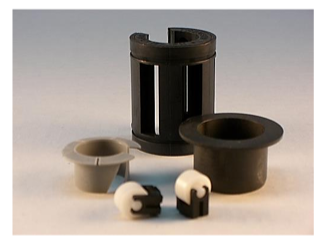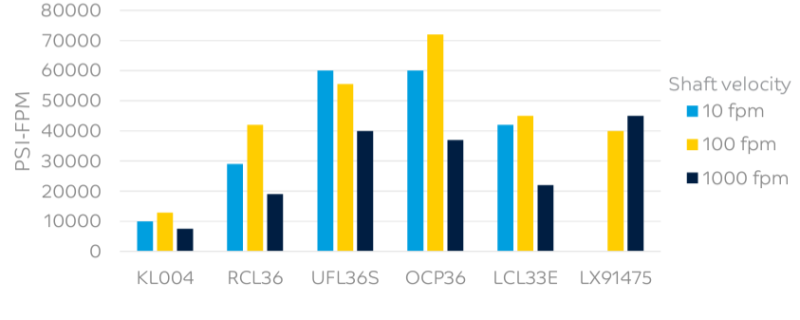Knowde Enhanced TDS
Identification & Functionality
- Additives Included
- Chemical Family
- Fillers Included
- Polymer Name
- Plastics & Elastomers Functions
- Technologies
- Product Families
Features & Benefits
Applications & Uses
- Markets
- Applications
- Plastics & Elastomers End Uses
- Plastics & Elastomers Processing Methods
Properties
- Flame Rating
- Mechanical Properties
- Physical Properties
- Thermal Properties
- Electrical Properties
- Impact Properties
- Injection Molding
- Flame Characteristics
- Note
- ᵍ Measurements made from Laboratory test Coupon. Actual shrinkage may vary outside of range due to differences in processing conditions, equipment, part geometry and tool design. It is recommended that mold shrinkage studies be performed with surrogate or legacy tooling prior to cutting tools for new molded article.
- ᵖ UL ratings shown on the technical datasheet might not cover the full range of thicknesses and colors. For details, please see the UL Yellow Card.
- ⁷ Injection Molding parameters are only mentioned as general guidelines. These may not apply or may need adjustment in specific situations such as low shot sizes, large part molding, thin wall molding and gas-assist molding.
- ¹¹ The information stated on Technical Datasheets should be used as indicative only for material selection purposes and not be utilized as specification or used for part or tool design.
| Value | Units | Test Method / Conditions | |
| Tensile Stress (Break) ¹¹ | 182 | MPa | ASTM D638 |
| Tensile Stress (Break) ¹¹ | 245 | MPa | ISO 527 |
| Tensile Stress (Yield, 5 mm/min) ¹¹ | 220 | MPa | ISO 527 |
| Tensile Strain (Break, 5 mm/min) ¹¹ | 1.6 | % | ISO 527 |
| Tensile Strain (Break) ¹¹ | 0.9 | % | ASTM D638 |
| Tensile Strain (Break) ¹¹ | 1.8 | % | ISO 527 |
| Flexural Stress (Yield, at 2 mm/min) ¹¹ | 315 | MPa | ISO 178 |
| Tensile Modulus (at 50 mm/min) ¹¹ | 32400 | MPa | ASTM D638 |
| Flexural Modulus (at 2 mm/min) ¹¹ | 16800 | MPa | ISO 178 |
| Flexural Stress ¹¹ | 372 | MPa | ASTM D790 |
| Flexural Stress ¹¹ | 396 | MPa | ISO 178 |
| Flexural Modulus ¹¹ | 18400 | MPa | ASTM D790 |
| Flexural Modulus ¹¹ | 22700 | MPa | ISO 178 |
| Tensile Modulus (at 1 mm/min) ¹¹ | 22600 | MPa | ISO 527 |
| Value | Units | Test Method / Conditions | |
| Wear Factor Washer ¹¹ | 15 | 10^-10 in^5-min/ft-lb-hr | ASTM D3702 Modified: Manual |
| Dynamic COF ¹¹ | 0.36 | — | ASTM D3702 Modified: Manual |
| Density ¹¹ | 1.38 | g/cm³ | ISO 1183 |
| Density ¹¹ | 1.37 | g/cm³ | ASTM D792 |
| Moisture Absorption (at 23°C, 50% RH, 24hrs) ¹¹ | 0.5 | % | ASTM D570 |
| Mold Shrinkage (flow, 24 hrs) ᵍ ¹¹ | 0.1 | % | ASTM D955 |
| Mold Shrinkage (flow, 24 hrs) ᵍ ¹¹ | 0.11 | % | ISO 294 |
| Mold Shrinkage (xflow, 24 hrs) ᵍ ¹¹ | 0.7 | % | ASTM D955 |
| Mold Shrinkage (xflow, 24 hrs) ᵍ ¹¹ | 0.72 | % | ISO 294 |
| Static COF ¹¹ | 0.3 | — | ASTM D3702 Modified: Manual |
| Value | Units | Test Method / Conditions | |
| Coefficient of Thermal Expansion (at 23°C to 60°C, flow) ¹¹ | 0.000005 | 1/°C | ISO 11359-2 |
| Coefficient of Thermal Expansion (at 23°C to 60°C, xflow) ¹¹ | 0.00008 | 1/°C | ISO 11359-2 |
| Heat Deflection Temperature/Af (at 1.8 Mpa, Flatw 80*10*4, sp=64mm) ¹¹ | min. 240 | °C | ISO 75/Af |
| Heat Deflection Temperature/Af (at 1.8 Mpa, Flatw 80*10*4, sp=64mm) ¹¹ | 251 | °C | ISO 75/Af |
| Relative Temperature Index (Electrical) ᵖ ¹¹ | 65 | °C | UL 746B |
| Relative Temperature Index (Mechanical with impact) ᵖ ¹¹ | 65 | °C | UL 746B |
| Relative Temperature Index (Mechanical without impact) ᵖ ¹¹ | 65 | °C | UL 746B |
| Heat Deflection Temperature (at 1.82 MPa, 3.2mm, Unannealed) ¹¹ | 255 | °C | ASTM D648 |
| Value | Units | Test Method / Conditions | |
| Surface Resistivity ¹¹ | 10 - 1000 | Ω | ASTM D257 |
| Value | Units | Test Method / Conditions | |
| Izod Impact (Unnotched, 80*10*4, at 23°C) ¹¹ | 64 | kJ/m² | ISO 180/1U |
| Izod Impact (Notched, 80*10*4, at 23°C) ¹¹ | 10 | kJ/m² | ISO 180/1A |
| Izod Impact (Unnotched, at 23°C) ¹¹ | 1068 | J/m | ASTM D4812 |
| Izod Impact (Notched, at 23°C) ¹¹ | 101 | J/m | ASTM D256 |
| Instrumented Dart Impact Energy (Peak, at 23°C) ¹¹ | 10 | J | ASTM D3763 |
| Multi-Axial Impact ¹¹ | 4 | J | ISO 6603 |
| Value | Units | Test Method / Conditions | |
| Drying Temperature ⁷ | 80 | °C | — |
| Drying Time ⁷ | 4 | Hrs | — |
| Maximum Moisture Content ⁷ | 0.15 - 0.25 | % | — |
| Melt Temperature ⁷ | 280 - 305 | °C | — |
| Front - Zone 3 Temperature ⁷ | 295 - 305 | °C | — |
| Middle - Zone 2 Temperature ⁷ | 280 - 295 | °C | — |
| Rear - Zone 1 Temperature ⁷ | 265 - 275 | °C | — |
| Mold Temperature ⁷ | 95 - 110 | °C | — |
| Back Pressure ⁷ | 0.2 - 0.3 | MPa | — |
| Screw Speed ⁷ | 30 - 60 | rpm | — |
| Value | Units | Test Method / Conditions | |
| UL Recognized (94HB Flame Class Rating) ᵖ | 1.5 | mm | UL 94 |
Regulatory & Compliance
- Certifications & Compliance
Technical Details & Test Data
- LNP™ Compounds Wear and Friction Solutions Bearings, Bushings, Cams and Sliders
At the push of a button, windows move, doors lock, copies get made, and HVAC comes to life. These electromotive actions require gears, bearings, bushings and other wear surfaces to provide smooth, reliable, actuation forces. LUBRICOMP™ and LUBRILOY™ compounds can help deliver the high quality performance required.

Thermoplastic Bearings
While resistance to wear is important for thermoplastic bushings/bearings, low friction can be more important. Heat generated from friction is often the limiting factor in plastic bearing applications. The operating load (P) and speed (V) of the application can be compared to the allowable, or “Limiting PV” of a candidate material. The data shown below was generated using a cylindrical half bearing test configuration, but modern thrust washer testers can be used to develop PV maps as well.
Internally Lubricated Compounds
The addition of an internal lubricant to a thermoplastic material can improve the wear resistance and reduce the coefficient of friction in plastic parts. Traditional lubricants like MoS2 , PTFE and PTFE/Si blends are common, with reinforcements like glass and carbon fiber adding strength and modulus. High temperature resins are sometimes required to resist deformation from friction generated heat.
Limiting Pressure Velocity

Packaging & Availability
- Regional Availability